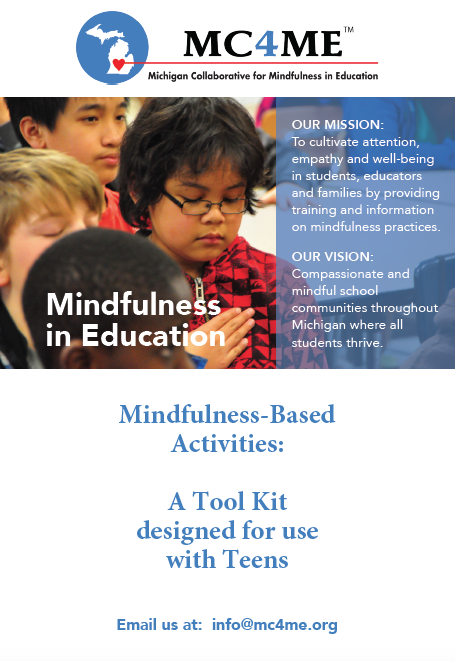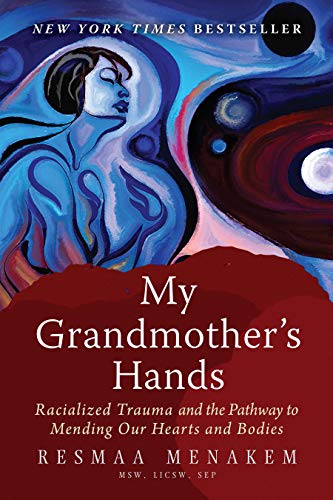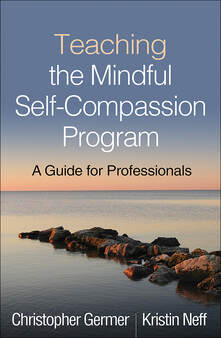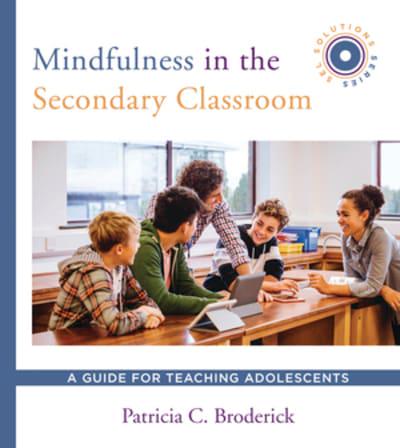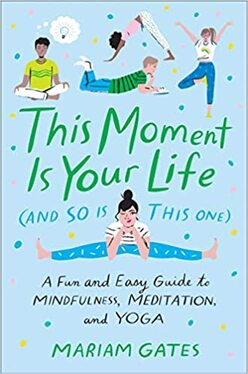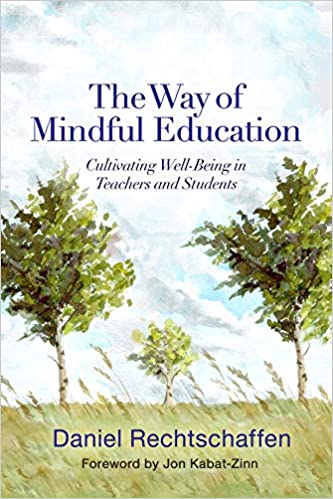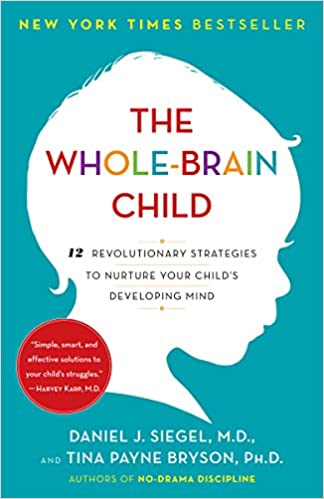Download our recommended book list. Below are selected books we have reviewed in our newsletters.
Mindfulness-Based Activities: a tool-kit designed for use with teens
This resource is a collection of close to 60 activities designed to introduce teens to the practice of mindfulness. The activities have been well curated. They have been used successfully by experienced mindfulness instructors affiliated with MC4ME, with many adapted from published mindfulness books. The included activities are grouped into 5 focal areas: 1) moods, thoughts and emotions; 2) breath and the body; 3) senses; 4) opening the heart; and 5) stress-releasing. Each activity provides instructions for leading and closing the practice along with suggested set-up and prompts for discussion. The time frame for most of the activities falls between 1 - 5 minutes. Classroom teachers, psychologists or social workers conducting group work and youth group facilitators will find they can easily apply these activities to in-person and online formats. This resource is available without charge as a PDF upon request, email: [email protected].
|
My Grandmother’s HandsResmaa Menkaem
My Grandmother’s Hands: Racialized Trauma and the Pathway to Mending Our Hearts and Bodies is a powerful book that confronts the impact of racial trauma of black and white skinned peoples. The book is unique in that the author persuasively argues that healing from racial injustice in our country will only occur from deep investigation of internalized trauma that lead to White Supremacy, and the aftermath we live over and over again in the experience of black-skinned peoples. BUY THIS BOOK |
Teaching the Mindful Self-Compassion ProgramChristopher Germer & Kristin Neff
This book is a comprehensive instruction manual for how to teach the 8 week mindfulness self-compassion program (MSC) as developed by Drs. Chris Germer and Kristin Neff. Though not written as a replacement for taking the MSC teacher training program, this book offers a guide to the process and activities that are included in their curriculum. The authors provide information on the clinical importance and scientific studies that undergird their program, along with sensitively worded therapeutic suggestions on how to handle potential pitfalls that may arise for participants during the sessions. Clinical scripted examples of these situations as well as options for scaffolding activities and time allotments for facilitation are provided. In addition, the authors also address in a separate section how to incorporate mindful self-compassion into psychotherapy. This book is a particularly valuable resource for seasoned mindfulness practitioners who are leading or planning to lead psycho-educational groups where psychological well-being is the desired outcome, as well as for those interested to take the MSC teacher training program. BUY THIS BOOK |
Mindfulness in the Secondary Classroom: A Guide for Teaching Adolescent
Patricia C. Broderick
This book offers a wonderful primer for teaching mindfulness to adolescents. It is the first volume in a published series focused on social and emotional learning solutions. Dr. Broderick, the developer of the Learning to Breathe curriculum and researcher at Penn State University, provides a strong case and framework for teaching mindfulness practice to middle and high school students. She interweaves research and concepts of adolescent development together with theory, neuroscience, and educational foundations of mindfulness meditation. She presents this information in a straightforward and concise fashion, making the concepts and practices very easy to understand. Each of the seven chapters in the book provides concrete examples of different meditation practices as well as applications, reflections and activities that can help middle and secondary school teachers embody their understanding, deepen their practice for themselves and safely guide their students. This book is a valuable resource for experienced as well as novice teachers to meditation and other mindfulness instructors who work in schools. We highly recommend adding this resource to your book shelf. BUY THIS BOOK |
This Moment Is Your Life (and So Is This One): A Fun and Easy Guide to Mindfulness, Meditation, and YogaMariam Gates
This book is a wonderful resource to help teachers and parents introduce tweens and teens to mindfulness-based practices. The book is a quick read and well-organized. It is divided into five chapters. In the first four chapters, the author provides pertinent background information, along with specific activities to explore each of the following areas: mindfulness, mindful yoga, mindful breathing and mindful meditation. In the fifth and final chapter, a 5-day mindfulness challenge is offered to serve as a how-to planning guide for incorporating mindfulness into everyday life. Throughout the book, there are easy to follow instructions accompanied by colorful illustrations to depict the various activities, body positions and sequences of movement poses. We heartily recommend this book to help beginners of all ages explore the variety of ways to learn and experience mindfulness. BUY THIS BOOK |
The Way of Mindful Education: Cultivating Well-Being in Teachers and StudentsDaniel Rechtschaffen
This book has been hailed as a unique resource for transforming our schools by a number of prominent leaders in the fields of mindfulness and social emotional learning. The first half of the book is divided into three parts and sets the context for mindful teaching and education. In Part 1, Why Mindfulness Matters, Rechtschaffen defines mindfulness, introduces us to a range of mindfulness work already happening in schools and presents an overview of scientific findings on personal benefits. Part 2, Begin With Yourself, emphasizes the importance for teachers and parents to experience mindfulness practices before effectively teaching these skills to children and teens. In Part 3, The Mindful Classroom, the author describes the qualities of a mindful teacher, and essential ingredients for a mindfulness classroom, including ways to address diversity and inclusion, stress and trauma and the needs of different age groups. The second half of the book focuses on the Mindful Education Curriculum - "how to introduce students to mindfulness in an accessible way that has the greatest impact”, and shares a basic lesson planning layout, along with eighteen specific lessons to cultivate embodiment, attention, heartfulness and interconnectedness. The book ends with brief 'best practice' illustrations of mindfulness curricula that can be incorporated in schools and other youth-based settings. This book is a thorough and easy to read resource for educators and parents interested in introducing mindfulness practices into their schools and helping students develop the ability to concentrate, cope with stress and in sum, thrive. BUY THIS BOOK |
The Whole Brain Child: 12 Revolutionary Strategies to Nurture Your Child’s Developing MindDaniel J. Siegel, MD & Tina Payne Bryson, PH.D.
When children “melt down” in the middle of a store, on the baseball field or in the classroom, adults often aren’t sure what is best to do. These renowned authors suggest that such day-to-day struggles can be turned into teachable opportunities to positively influence our child’s development. They offer a brain-based framework to help adults grow the circuitry of neural connections in children that results in self-regulation and the “mindsight” for cultivating empathy, self-awareness and emotionally healthy relationships. While the book is steeped in scientific explanations, the graphic illustrations, stories and descriptions of the use of 12 strategies, such as “Name it to Tame it” or Move it or Lose it”, makes the reading very accessible. BUY THIS BOOK |
The power of mindfulness practice is that of holding still, not buying into the discursive and frantic speculations of our own mind. We could spend time being simple, present, and aware. We could let the body relax, place our attention on the breath going in and out, and let the mind settle.”
– Judy Lief, Meditation Teacher and Author

